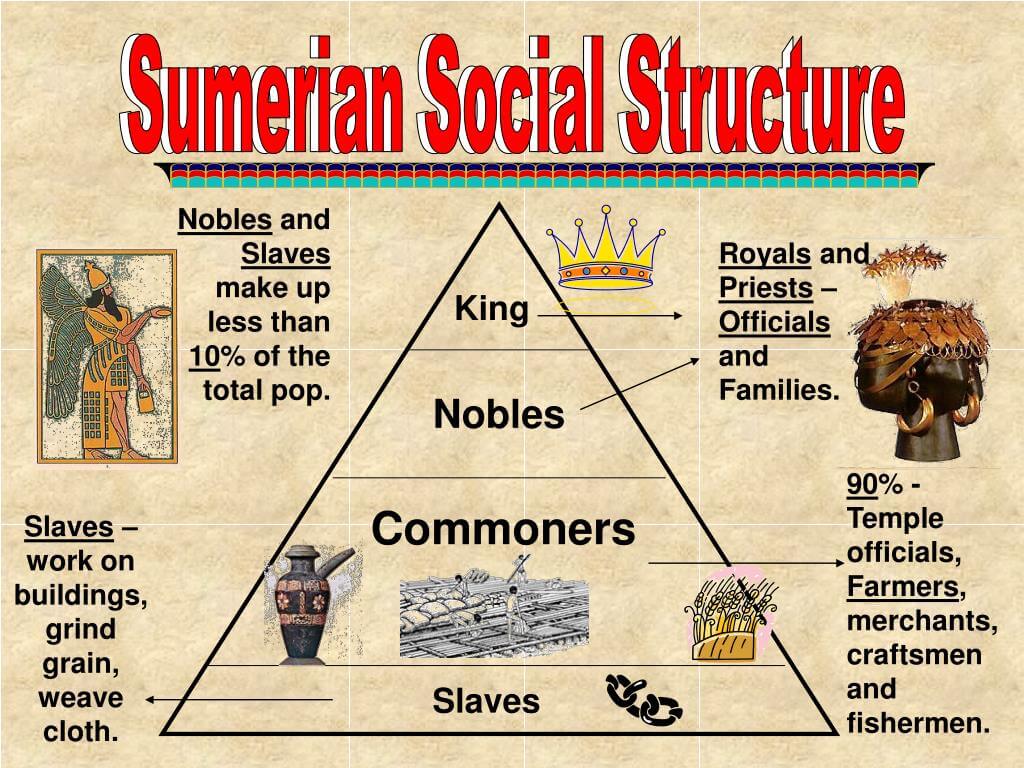The social classes of Sumer represent one of the earliest complex societies in human history, showcasing a nuanced hierarchy that influenced every aspect of life in ancient Mesopotamia. Understanding these classes is crucial for grasping how Sumerians organized their society, governed their cities, and interacted with one another. This article delves into the intricacies of Sumerian social structure, highlighting the roles, responsibilities, and interrelations of various social strata.
The Sumerians, known for their advancements in writing, architecture, and governance, lived in city-states around 4500 to 1900 BCE in what is now southern Iraq. Their society was characterized by a sophisticated hierarchy that can be broken down into distinct social classes, each with its own functions and societal contributions. This comprehensive overview serves to illuminate the significance of these classes in shaping not just Sumerian civilization but also influencing future societies.
This article will explore the various social classes of Sumer, including the ruling elite, priests, merchants, and laborers, their interconnections, and how these relationships facilitated the development of one of the world's first urban civilizations. With a focus on the principles of Expertise, Authoritativeness, and Trustworthiness (E-E-A-T), this piece aims to provide reliable insights into the social dynamics of ancient Sumer.
Table of Contents
- Biography of Sumerian Society
- Personal Data and Biodata
- The Social Structure of Sumer
- The Ruling Elite
- The Role of Priests
- The Merchant Class
- Laborers and Farmers
- Conclusion
Biography of Sumerian Society
The Sumerians are credited with forming one of the first civilizations in the world, emerging around the 4th millennium BCE. They established city-states such as Ur, Uruk, and Eridu, each functioning as a political and economic entity. Their innovations included the invention of cuneiform writing, advancements in mathematics, and developments in irrigation and agriculture.
Personal Data and Biodata
| Data Type | Information |
|---|---|
| Period | 4500 - 1900 BCE |
| Region | Southern Mesopotamia (Modern Iraq) |
| Key Contributions | Cuneiform Writing, Mathematics, Urban Planning |
| Notable City-States | Ur, Uruk, Lagash, Eridu |
The Social Structure of Sumer
The Sumerian social hierarchy was typically divided into several classes, including the ruling class, priests, merchants, artisans, and laborers. This structure not only dictated the distribution of wealth and power but also influenced social interactions and cultural practices.
1. The Ruling Class
The ruling class comprised kings, nobles, and officials who held significant power over the city-states. Their authority stemmed from both political and military control, often viewed as divinely ordained. They were responsible for law-making, tax collection, and defense of the city-state.
2. The Priestly Class
Priests played a crucial role in Sumerian society, serving as intermediaries between the gods and the people. They managed religious ceremonies, temples, and agricultural rituals, which were essential for ensuring prosperity. The priesthood often wielded considerable influence, sometimes rivaling that of the ruling elite.
The Ruling Elite
The ruling elite in Sumer was not only involved in governance but also in economic matters. They owned large tracts of land and controlled resources, which enabled them to maintain their power. The king, often regarded as a god-king, was at the top of the hierarchy, supported by a council of elders and nobles.
The Role of Priests
Priests were integral to Sumerian life, as they conducted rituals believed to appease the gods and ensure favorable conditions for agriculture. Their wealth came from temple donations and land ownership, making them a powerful class within the social framework of Sumer.
The Merchant Class
Merchants were vital for trade within and beyond Sumer. They facilitated the exchange of goods such as textiles, grain, and pottery, contributing to the economy's growth. As trade expanded, some merchants amassed significant wealth, leading to a gradual shift in social dynamics.
1. The Rise of Wealthy Merchants
With the increase in trade routes and interactions with neighboring regions, certain merchants began to accumulate wealth that rivaled that of the ruling class. This shift marked the beginning of a more complex economic structure, with trade becoming a key component of Sumerian society.
2. Artisans and Craftsmen
Artisans and craftsmen represented another essential layer of Sumerian society. Skilled in various trades, such as pottery, metalwork, and textiles, they produced goods that were vital for daily life and trade. Their work contributed to the cultural and artistic achievements of Sumer.
Laborers and Farmers
At the base of the Sumerian social hierarchy were the laborers and farmers. Responsible for agricultural production, they worked the land and provided food for the entire society. Despite their essential role, this class had limited power and often faced harsh conditions.
Conclusion
In summary, the social classes of Sumer provide a fascinating glimpse into the complexities of one of the world’s first civilizations. From the ruling elite and powerful priests to the industrious merchants and laborers, each class played a significant role in shaping Sumerian society. Understanding these dynamics not only enriches our knowledge of Sumer but also highlights the foundations of social organization that continue to resonate in modern societies.
We encourage readers to share their thoughts on the social classes of Sumer in the comments below. If you found this article informative, consider sharing it with others or exploring our other articles on ancient civilizations.
Thank you for visiting our site, and we hope to see you again for more insightful articles on history and culture!


